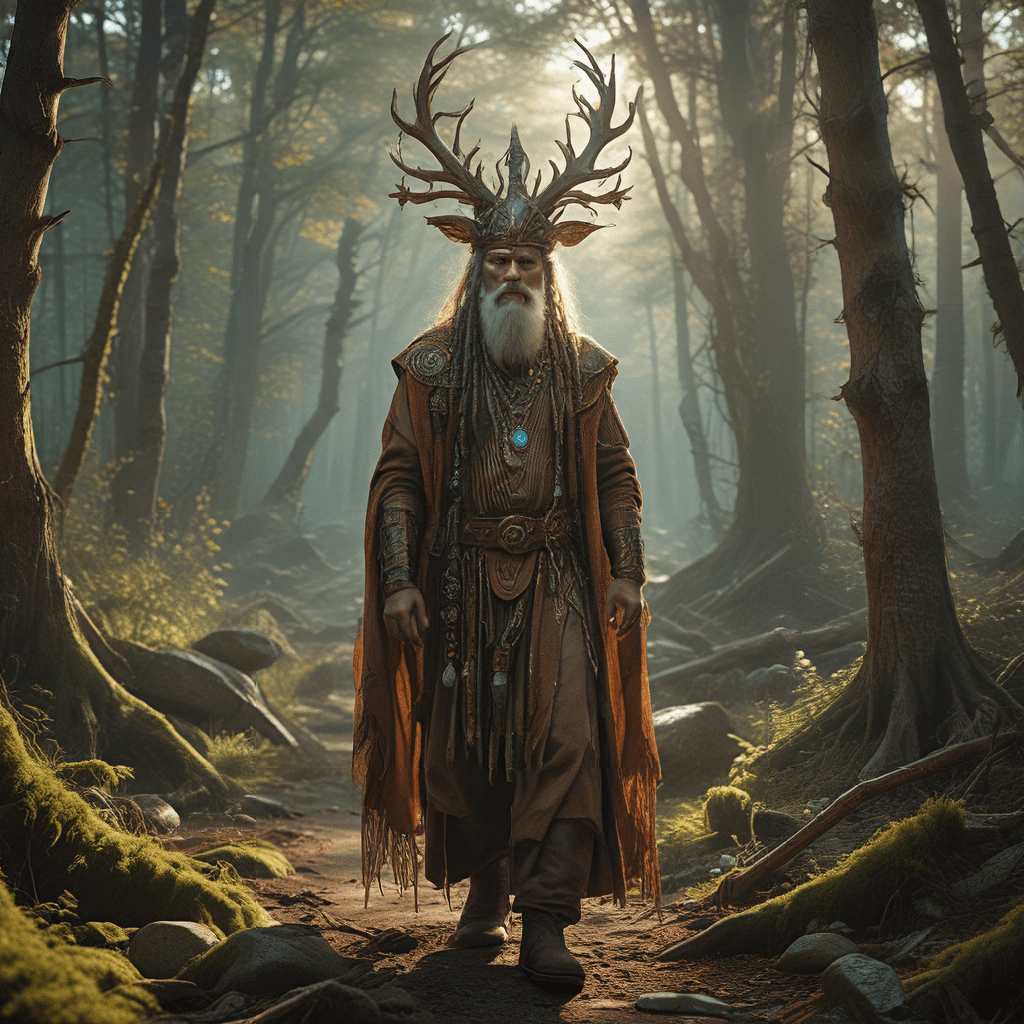The Worldview of Baltic Mythology
Baltic mythology, encompassing the beliefs and stories of the ancient Latvians, Lithuanians, and Prussians, paints a vibrant picture of a world imbued with nature's power and the presence of deities. The Baltic worldview revolved around the interconnectedness of humanity and the natural world, with a deep respect for the cycles of life, death, and rebirth. They believed that the gods and goddesses were not distant and aloof but actively involved in the lives of humans, often influencing events and offering guidance. Their stories served as a moral compass, teaching about right and wrong, the importance of community, and the need to maintain harmony with the natural world.
The Role of the Supernatural in Baltic Folklore
The supernatural permeates every corner of Baltic folklore. The ancient Balts believed in a complex hierarchy of beings, including gods, goddesses, spirits, and mythical creatures. These entities were not merely figments of imagination but powerful forces that shaped the world and influenced human lives.
Gods like Perkūnas, the thunder god, and Dievs, the sky god, held sway over the elements, while goddesses like Laima, the goddess of fate, and Žemyna, the goddess of the earth, oversaw human destinies and the fertility of the land. Spirits inhabited the forest, lakes, and mountains, guarding the natural world and sometimes interacting with humans. Mythical creatures like the Laima, the goddess of fate, and the Velnias, the devil, were both feared and respected for their power and influence.
Shamanism in Baltic Culture: Evidence and Interpretations
Shamanism, a belief system centered on the ability to communicate with the spirit world and access altered states of consciousness, played a crucial role in Baltic culture. While direct evidence of shamanic practices is limited, archaeological findings, ethnographic studies, and folklore offer clues about their existence.
The discovery of burial sites with shamanic paraphernalia, such as drums, bells, and animal bones, suggests the presence of individuals who acted as intermediaries between the human and spirit worlds. Moreover, ancient texts and folklore mention figures with supernatural abilities who could heal the sick, predict the future, and control the elements.
The Shaman’s Journey: Exploring the Realm of the Gods
The Balts believed that shamans could use specific techniques, including drumming, chanting, and the use of psychoactive substances, to enter a trance state and embark on spiritual journeys to the realm of the gods. These journeys allowed shamans to receive knowledge, seek guidance, and negotiate with the divine beings on behalf of the community.
The shaman's journey was often described as a perilous expedition through a landscape filled with obstacles and dangers. They would encounter spirits, mythical creatures, and sometimes even the gods themselves. The shaman's ability to navigate this otherworldly realm and return safely with divine knowledge and blessings was a testament to their power and connection to the spirit world.
Magic and Ritual in Baltic Mythology
Magic and ritual were inextricably intertwined with the everyday life of the ancient Balts. They believed that the world was filled with magical forces that could be harnessed through rituals and spells to influence events, heal illnesses, and protect their communities.
Rituals played a central role in Balts' belief system, serving as a way to honor the gods, communicate with the spirits, and influence the course of events. These rituals included offerings to the gods, sacrifices, and elaborate ceremonies to celebrate seasonal changes and mark important life events.
The Nature of Magic in Baltic Belief Systems
The ancient Balts believed that magic was a real and powerful force that existed in the world. They viewed magic as a blend of natural forces, ancestral knowledge, and the ability to communicate with spirits. The world was seen as infused with magical energy, which could be harnessed and manipulated through rituals, spells, and the use of herbal remedies.
Magic was not simply a tool for personal gain, but also a means for maintaining harmony with the natural world. It was used to ensure good harvests, protect livestock, heal illnesses, and ward off evil spirits. The Balts believed that magic was a gift from the gods, and that those who possessed it had a responsibility to use it for the benefit of their community.
The Use of Herbs, Charms, and Spells
The ancient Balts used a wide variety of herbs, charms, and spells in their magical practices. Herbs like St. John's Wort and wormwood were believed to have potent magical properties and were used in healing rituals, protection spells, and to ward off evil spirits. Charms, often made from bone, wood, or stone, were worn for protection and were believed to possess the power to ward off misfortune.
Spells, carefully crafted words or phrases, were used to influence events and communicate with the spirit world. The Balts believed that the power of spells lay in their ability to harness the forces of nature and the attention of the spirits. They were used for a variety of purposes, including healing, divination, and protection.
The Importance of Ancestors and Spirits
The Balts held a deep reverence for their ancestors, believing that they continued to influence the lives of the living from the spirit world. They believed that their ancestors had a special connection to the gods and could act as intermediaries between the human and divine realms. Ancestral spirits were honored and appeased through rituals, offerings, and the preservation of family traditions.
They also believed in a vast world of spirits that inhabited the natural world. These spirits were associated with specific places, objects, and natural phenomena. Some spirits were benevolent, offering protection and guidance, while others were malevolent, capable of causing harm. The Balts believed that they could communicate with these spirits through rituals and offerings.
The Connection Between Shamanism and the Supernatural
The Balts believed that shamans were individuals with a special ability to communicate with the spirit world and access supernatural knowledge. They were seen as intermediaries between the human and divine realms, capable of healing the sick, predicting the future, and controlling the elements.
Shamanism was intimately connected to the supernatural. They relied on their connection to the spirits to perform rituals, heal illnesses, and access the divine knowledge that was necessary to maintain balance in the world. They were respected for their power and wisdom, and their role in the community was essential.
The Legacy of Baltic Mythology and its Impact on Modern Culture
While Baltic mythology is no longer a dominant belief system, it continues to have a profound impact on modern culture. Many of the folk traditions, customs, and beliefs of the Balts have survived to the present day, woven into the fabric of Latvian, Lithuanian, and Prussian culture.
The ancient tales of the gods, goddesses, and mythical creatures continue to inspire artists, writers, and musicians. The enduring themes of nature, community, and the power of the supernatural continue to resonate with people today. Baltic mythology reminds us of the importance of respecting nature, honoring our ancestors, and embracing the mystery of the unknown.
FAQs
What are some key elements of Baltic mythology?
Key elements include a pantheon of deities, a strong connection to nature, a belief in magic and the supernatural, and the importance of ancestors and spirits.
What are some examples of Baltic deities?
Some notable deities include Perkūnas (thunder god), Dievs (sky god), Laima (goddess of fate), and Žemyna (goddess of the earth).
What is the role of shamanism in Baltic culture?
Shamans were believed to have the ability to communicate with the spirit world and access supernatural knowledge, acting as intermediaries between the human and divine realms.
What is the significance of magic in Baltic culture?
Magic was seen as a real and powerful force that could be harnessed through rituals, spells, and the use of herbs. It was used for healing, protection, and maintaining harmony with the natural world.
How does Baltic mythology impact modern culture?
Baltic mythology continues to influence art, literature, and music. The themes of nature, community, and the supernatural continue to resonate with people today.




